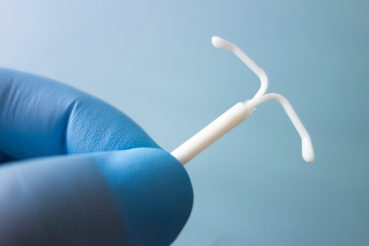Joy Sobocinski, 59, is a CrossFit devotee. Until recently, she worked out six days a week, focused on fitness as a way to keep herself in physical and emotional health.
So when an unexpected recurrence of her breast cancer led to a mastectomy, she turned to RUSH and to robotics to help with her reconstruction and get back to her normal life — and the gym.
Sobocinski thought she was finished with cancer. She faced her first diagnosis in 2000, when she was 36 and a mother of young children. She had gone through the chemo, radiation and surgery to remove the tumor as well as a lymph node.
She received a clean bill of health at one year, five years and 10 years. She moved on. Her children grew up. Then, in 2020, the cancer came back.
“Same breast, same spot,” Sobocinski said. “It was the night before Thanksgiving when I got my test results. It was awful.”
She came to Rush University Medical Center for treatment with a surgical oncologist. This time, that treatment included removal of her left breast.
“I didn’t really have a choice but to have a mastectomy,” Sobocinski said. “So that wasn’t fun.”
Robotic reconstruction
She also met with David Kurlander, MD, plastic and reconstructive surgeon for breast reconstruction, and she finally had some choices.
There are two general options for breast reconstruction: breast implants or a patient’s own tissues, most commonly a surgical procedure known as DIEP (deep inferior epigastric perforator) flap. DIEP flap surgery takes a patient’s own excess abdominal skin and fat to rebuild a breast.
“Once healed, the reconstructed breast tissue is there forever, whereas implants may require revisions in the long term,” Kurlander said.
DIEP flap breast reconstruction traditionally requires a large incision through the abdominal muscles. While most DIEP surgery does not use robotics, a handful of institutions worldwide, including RUSH, have the capability of robot-assisted DIEP flap surgery, which allows for a significantly smaller incision through the muscles. The smaller incision and use of precision robotics may shorten healing time and reduce unpleasant after-effects of the procedure.
“The benefit of the robotic approach is a very small incision through the abdominal muscles,” Kurlander said. “This can lead to less pain, quicker recovery, and less chance of abdominal weakness.”
Looking for long-term results
Sobocinski said she knew others in the breast cancer community who had bad experiences with breast implants, and wanted the long-term results that DIEP flap breast reconstruction surgery would provide. She was also drawn to the robot-assisted procedure, which would help her get back to her normal life more quickly.
“I’m 59 now. I don’t have patience here,” she said. “I want to get back to where I was.”
Sobocinski says that her care at RUSH has been wonderful. “When I was first in recovery they would come in every half hour to make sure I was doing okay. You could hear the blood flow to the new tissue on the monitor.”
For now, she’s marking her recovery in smaller accomplishments.
“I’m back to work,” she said. “And I’ve got an online coach now, and I did some ab stuff the other day. It was supposed to be for 30 seconds, but it’s only for 15. But it’s something. I’m getting there.”




